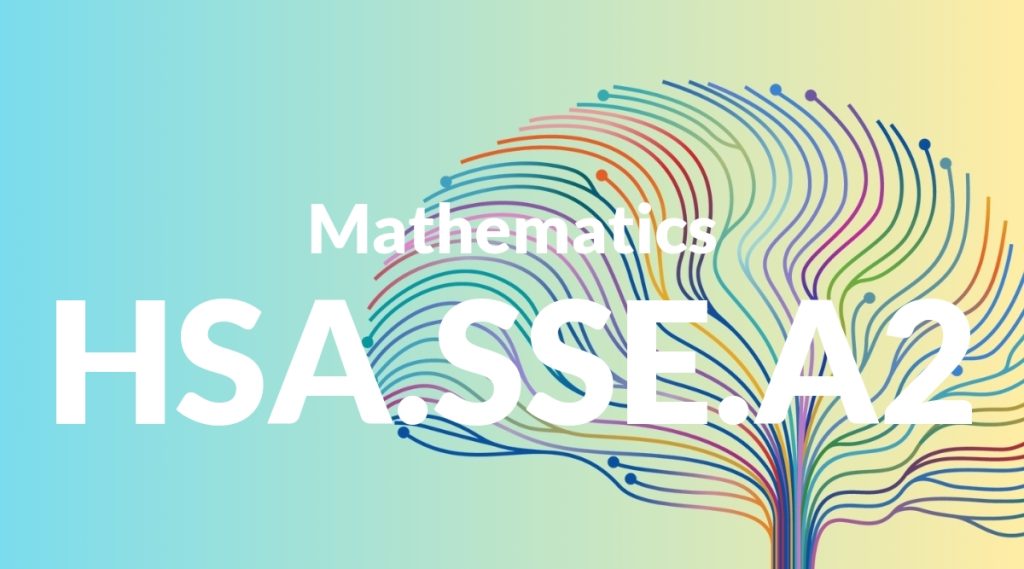Standard: HSA.SSE.A2 – Use the structure of an expression to identify ways to rewrite it. For example, see x⁴ – y⁴ as (x²)² – (y²)², thus recognizing it as a difference of squares that can be factored as (x2 – y2)(x2 + y2).
Grade level: High School: Algebra
Subject: Mathematics
Domain: Seeing Structure in Expressions
Teacher Overview
This standard focuses on helping students recognize and use the structure of algebraic expressions to rewrite them in simpler or more useful forms. This skill is crucial for solving complex equations and understanding higher-level math concepts. Mastery of this standard supports students in their overall mathematical fluency and problem-solving abilities. Before tackling this standard, students should be comfortable with basic algebraic operations, including factoring and expanding expressions, and should have a foundational understanding of polynomial expressions.
After mastering this standard, students will be able to tackle more complex algebraic equations and will be better prepared for calculus topics, such as finding derivatives and integrals of polynomial functions.
Common Misconception 1
A common misconception is that expressions like x⁴ – y⁴ cannot be factored further. This is incorrect because x⁴ – y⁴ can be seen as (x²)² – (y²)², which is a difference of squares and can be factored as (x² – y²)(x² + y²).
Intervention 1
To address this misconception, provide students with practice problems that involve recognizing and factoring differences of squares. Use visual aids and step-by-step examples to reinforce the concept.
Common Misconception 2
Another misconception is confusing the difference of squares with the sum of squares. Students may incorrectly attempt to factor expressions like x² + y² using the same methods as for x² – y².
Intervention 2
Clarify the distinction by using visual aids and providing examples that show the correct and incorrect methods for each type of expression. Reinforce the concept with targeted practice problems.
Prerequisite Knowledge
Students should understand basic algebraic operations, including factoring and expanding expressions, and have familiarity with polynomial expressions.
Subsequent Knowledge
Students will develop the ability to solve more complex algebraic equations and will be better prepared for calculus topics, such as finding derivatives and integrals of polynomial functions.
Instructional Activities
- Practice problems involving factoring differences of squares
- Group activities where students identify and rewrite algebraic expressions
- Interactive whiteboard sessions to visualize the structure of expressions
- Real-world application problems, such as financial modeling
- Use of algebraic software to manipulate and simplify expressions




